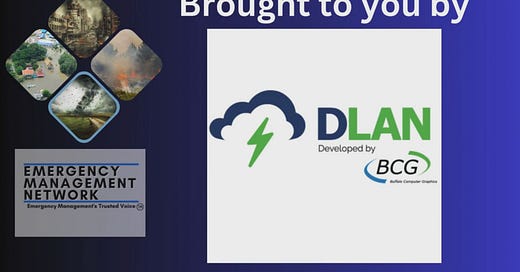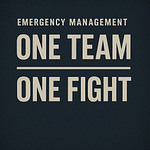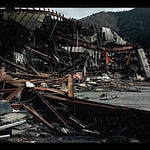In the fast-paced world of emergency management, staying ahead of potential threats during large-scale events like the Super Bowl is critical. Skyline Technology Solutions is at the forefront of this effort and a key player in integrating real-time video-sharing solutions that empower emergency responders to make swift, informed decisions. In this edition, we sit down with Mia Millette, CEO of Skyline Technology Solutions, to explore how their cutting-edge technology transforms public safety operations and strengthens community resilience. Join us as we delve into the innovations shaping emergency management's future.
.
Todd:
Good morning, good afternoon, depending on where you are today. Here in California, we're moving into a beautiful fall season, and I hope it's the same for you wherever you are. We're here to talk about Super Bowl collaboration. As a lifelong sports fan, I've followed sports forever, although my team went to the Super Bowl four times in a row and couldn't pull it off. But that's not what we're here to talk about. Today, we're talking with Mia Millette about technology and how it supports big events like the Super Bowl. Welcome, Mia!
Mia:
Hi Todd, thanks for having me.
Todd:
Let’s start with your background. How did you get into technology and specifically into supporting major events like the Super Bowl?
Mia:
It's funny. My journey started back in second grade. I was fascinated by how technology worked and got into programming thanks to a teacher who really encouraged us. I went on to study computer science in college and started my career as a software developer, eventually becoming an analyst and project manager. Over the years, I’ve spent 27 years supporting technology projects in the public sector—state, local government, education, and public safety. I love solving problems and helping people through technology. Skyline was a great fit for me, and I’ve been here since 2017, taking over as CEO in 2021. Our work impacts over 143 million citizens nationwide, which makes my heart smile.
Todd:
That’s awesome! What are some of the pain points you're addressing with your technology?
Mia:
It’s mostly about connectivity and data sharing. We started as a network engineering company, but we've grown to offer a range of services. Our focus is on helping people and agencies securely connect and share their data in real-time.
Todd:
You supported the Super Bowl at SoFi Stadium in 2021. What were some key takeaways from that experience, especially in terms of video streaming?
Mia:
It was an amazing integration with Buffalo Computer Graphics, the City of Inglewood, and many other agencies. We used Skyline's video-sharing platform to provide real-time, near-zero latency video to public safety teams using D-LAN as their emergency management system. This allowed law enforcement and public safety teams to see everything they needed in real-time.
Todd:
Wow, that’s incredible. Do you also work with drones? Can you integrate drone footage into your system?
Mia:
Absolutely! Our system allows for integrating various video sources, including drones, into a unified command structure, so everyone has access to real-time footage, whether it's from static cameras, drones, or other video systems.
Todd:
That’s really useful for smaller jurisdictions that may not have helicopters or other expensive resources. Being able to share drone footage with local agencies is critical, especially in places like California during wildfires. Are you looking at things like this for future events, like the Olympics?
Mia:
Yes, we’re definitely in conversations about the Olympics, although nothing is official yet. But events like these have a lot of moving parts, and video sharing will be key for public safety.
Todd:
What about sharing video securely? How do you ensure that streams aren’t misused?
Mia:
We’ve seen instances where people scrape video streams and try to resell them. To address this, we’re rolling out stream tokenization, so only authorized users can access video feeds. It adds a layer of security to prevent unauthorized use of live video.
Todd:
That’s brilliant. It’s important that the right people have access to the video, but also that the privacy and security of these feeds are maintained.
Mia:
Exactly. We focus on ensuring that video is used properly and helps keep people safe. For example, after a bridge collapsed in Philadelphia, we set up cameras with Starlink connectivity to help monitor the recovery process in real-time. That footage was even live-streamed at Phillies games to show the public the progress being made.
Todd:
That’s really interesting. And it’s not just about emergency response; it’s also about showcasing how government works effectively.
Mia:
Yes, showing the public that their government is working hard to keep them safe and address problems quickly is key. Our team loves being part of that.
---
Closing Remarks
Todd:
Mia, thank you so much for joining us today. If anyone wants to learn more about Skyline or get in touch with you, how can they do that?
Mia:
Thanks, Todd. People can visit our website or reach out to us directly for more information on how we can help with their technology needs.
Todd:
Great! Thanks again for being here and for all the work you do to keep people safe through technology.
---
That wraps up the interview, highlighting Skyline's work in using real-time video solutions to support public safety at major events like the Super Bowl, with a forward look at other upcoming events like the Olympics.













Share this post